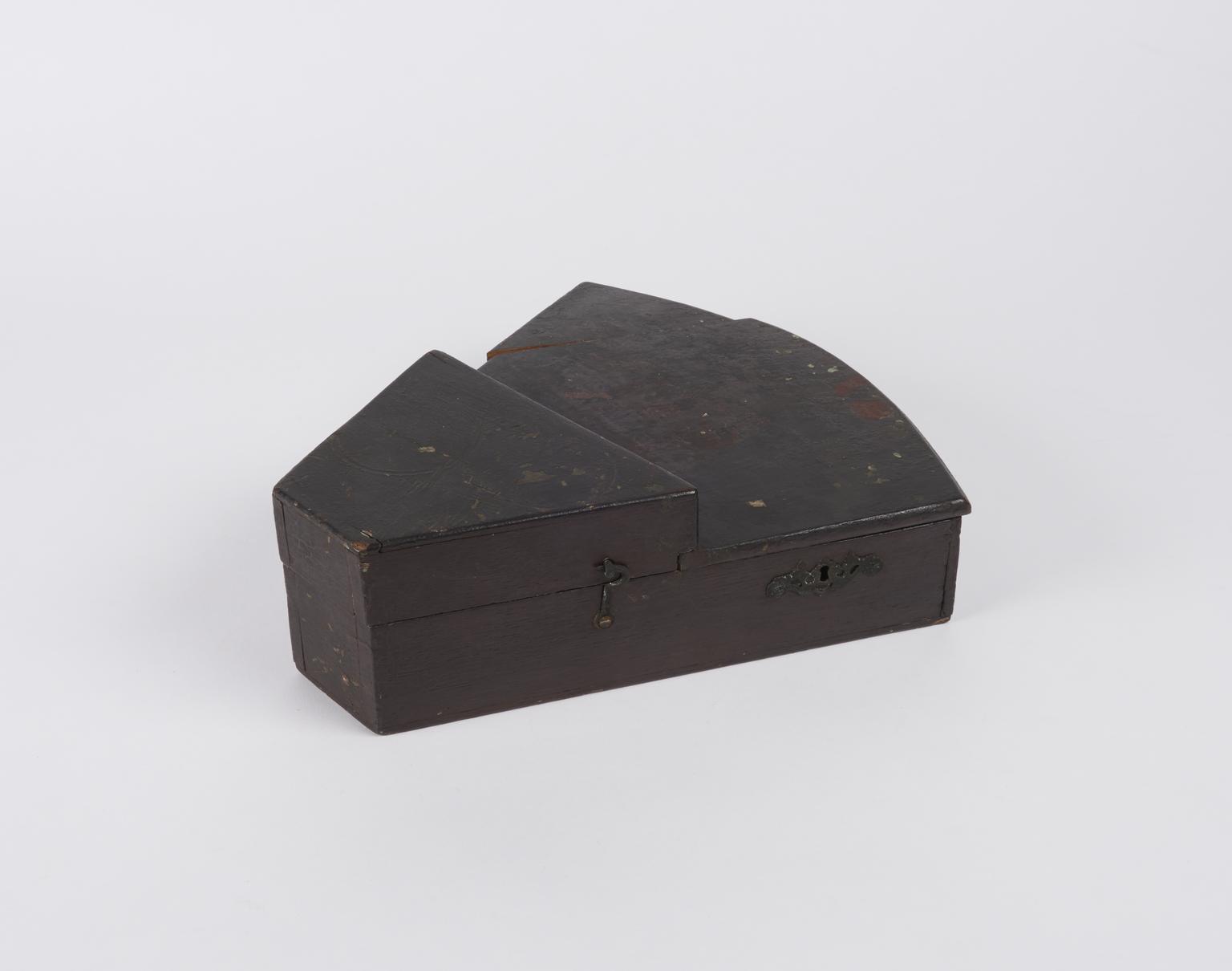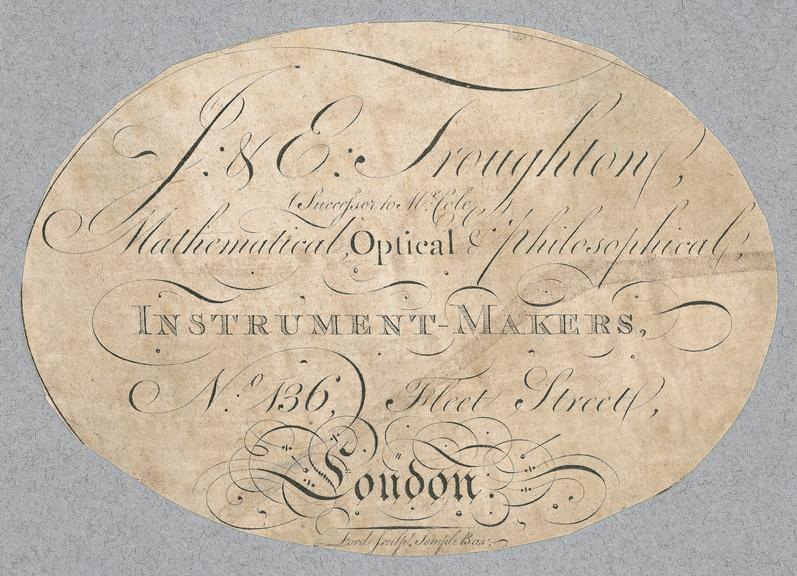
Ebony and brass octant.
Hadley's quadrant, 9 3/4 inch, made for Sir George Shuckburgh, Bart., by Troughton. In fitted case (lid cracked) with key. Ivory pencil holder missing.

Octant made by John and Edward Troughton, London, about 1800, for Sir George Shuckburgh, Bart. (1751-1804). Ebony frame and limb with a brass index arm and fittings; inlaid ivory plates on the crossbar and on the back of the frame. Signed at the bottom of the index arm: Troughton London. Inlaid ivory scale from -2° to 101° every 20', measuring to 90°. Ivory vernier to 1', zero at the right. The tangent screw and clamping screw are on the back of the index arm. Three shades (two red, one green); no horizon shades. Index-glass adjustment by screw; adjustment of the horizon glass by screw, lever, wing nut and a milled clamping screw. The sight vane has two pinholes and a swivelling shade (red). A pencil or screwdriver is missing from the crossbar. In a stepped oak keystone box, painted brown on the outside. Trade labels (taken from the box) for J. and E. Troughton, 136 Fleet Street, London (1788-1804) and for Ripley's, Mill Place, Commercial Road, London.

Hadley's quadrant, 9 3/4 inch, made for Sir George Shuckburgh, Bart., by Troughton. In fitted case (lid cracked) with key. Ivory pencil holder missing.
Trade card: J & E Troughton, 136 Fleet Street, London from case for Hadley's quadrant